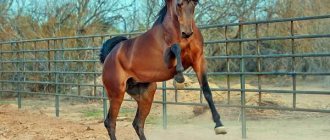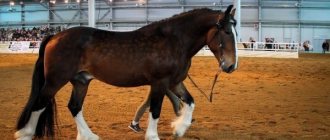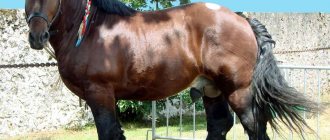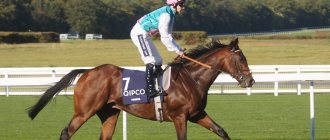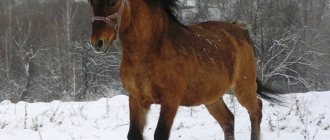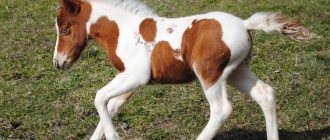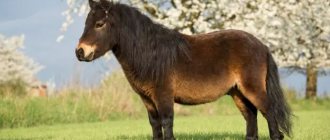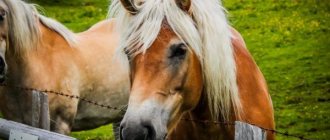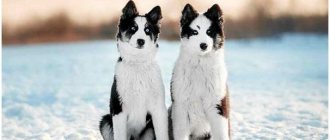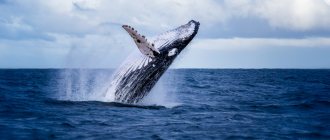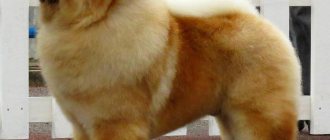Over many centuries and even millennia of horse breeding, horse lovers have bred hundreds of breeds that are perfectly adapted for various needs - from agricultural work to hunting. If previously horses were used mainly for practical purposes, today they are kept for competitions, participation in various shows, or simply for aesthetic pleasure.
Through the efforts of breeders, beauties have been bred, distinguished by their size and rare color, or unusual miniature breeds, which are kept as pets. Each breed has its own character and characteristics. We present the top 10 most beautiful horse breeds in the world.
Knabstrupper
If you know Cruella de Vil, do not under any circumstances tell her about the existence of a unique horse with a Dalmatian color. Knabstruppers are not only beautiful, but also incredibly kind - which is why they are often exploited to work in circuses.
This horse is not known for its physical strength and cannot be used as a draft horse, but they have proven themselves to have good health, endurance, trainability and developed intelligence. They make excellent draft horses - the features of their exterior allow them to work tirelessly if the load is not too heavy. The knabstrupper is also suitable for horse riding, although it is used much less frequently.
Knabstrupperskaya
Knabstrupper - this breed is distinguished by an unusual coat color - different shades and with fancy leopard spots, black, bay or red on a white background.
- Height: 155cm.
- Weight: 500–650 kg.
The breed was bred in Denmark, the first mentions date back to 1812. Today, Knabstruppers are bred in Norway, Sweden, Italy, Switzerland and other European countries, as well as in the USA and Australia.
These are strong horses with a kind, submissive character. They are easy to learn and obediently follow commands. Aggression and stubbornness are alien to them. They get along well with children.
Due to their endurance and beautiful movement, they are used for horse riding, show jumping, and circus arts.
World price and rarity indicators
The most expensive horse breed in the world is the English racing horse. Horses of this color are distinguished by increased endurance, quick reaction and excellent physique. They are simply made for racing. Animals are sold only through auction, and the price for a foal of this breed starts from a million dollars.
Another expensive breed is the Friesian horse breed. The usual price of venerable stallions does not exceed 25 thousand dollars, but horses that have undergone special training can be valued at a million.
Friesian breed
No one would have known about these interesting animals if not for chance. In 1920, zoologist Ruy d'Andrade, while walking along the Sorraia River (Spain), noticed a wild herd of a previously unknown breed of horse. The scientist studied the habits of animals and selected the strongest individuals, in his opinion, for breeding. Now foals of the rarest breed undergo strict selection at the stud farm before becoming breeding stallions.
Donskaya
The Don (Cossack steppe) horse is a Russian breed of riding and draft horses. It was bred in 1770 by Ataman Matvey Platov. The breed is based on steppe horses, as well as eastern breeds, which the Cossacks captured during the Turkish campaigns.
What is special about the Don horse breed? This is a combination of height (up to 165 cm) and elegance in appearance. Her color is often golden. It has preserved the best features of a cavalry horse, which is kept in herds.
Donskaya: Wikipedia
Today it is used in sports, rental, driving, tourism, and on private farms. Distributed in Kyrgyzstan, Kazakhstan, Russia.
Arabian thoroughbred horse
Arabian horses seem to have come out of illustrations of oriental fairy tales. These unusually beautiful animals were bred back in the 4th–7th centuries on the Arabian Peninsula. They are not distinguished by their high height - in stallions, on average, it is only about 153.4 cm. But the long neck and its beautiful curve give special grace to the Arabian horse. The most common colors are gray, bay and red. An interesting distinctive feature of these horses is their tail (sometimes called a “cock’s tail”), which they raise high when moving at a gait. Arabian horses are long-lived. Some individuals are able to reach the age of 30 years.
Wild tarpans
Back in the 19th century, in the vastness of Eurasia, one could find herds of wild ancestors of the modern horse. A relatively short animal with black-brown curly hair, it could easily get by without a person. They were not afraid of the harsh climate of the northern steppes. In the 18th century, numerous herds of these odd-toed ungulates grazed on the steppe expanses of modern Voronezh. Of course, they could not boast of the beauty of domestic horses, but they were still beautiful. Many horse breeds carry the blood of their wild counterparts. It was a rare wild stallion that could stand under the saddle, but if this happened the rider could demonstrate his dignity.
Unfortunately, the last representative of the forest subspecies was found on the territory of the modern Kaliningrad region in 1814, and its steppe specimen managed to survive only until 1879, when it was seen in the steppes of Taurida. Many horse breeders have dedicated their lives to recreating these animals. For now, there is only hope that they will be able to do this.
The most expensive horses
In addition to breeds, there are also individual horses, the cost of which is estimated at millions of dollars. The most expensive horse today is a horse named Frenkel (Frankel). He belongs to the English racing breed.
Frenkel is not currently competing, but his owner has no intention of selling him. Frenkel is likely to be in great demand as an elite stud horse.
In 1984, another representative of the English racing horses, Sheriff Dancer, was sold. The transaction amount was $40,000,000. Its price was based on its excellent pedigree and purity of the breed. This record sales amount has not yet been surpassed.
The horse, named Green Monkey, was purchased in 2006 for $16,000,000. He did not have a single victory to his name, the value was formed solely due to the excellent pedigree of his parents. In fact, it turned out to be an extremely unsuccessful deal, since Green Monkey never won any victories in sports.
A similar story happened with the acquisition of a horse named Seattle Dancer (Dancer) in 1985. The cost of the transaction for its purchase was $13,000,000.
And likewise, the expectations placed on him were not met.
Annicheilator was purchased in 1989 for $19,000,000. He was the fastest and most beautiful at the time of the auction. His fur was a deep dark chocolate color.
The Orlov Trotter breed originates from a horse named Smetanka. She was one of the Arabian horses, Count Orlov bought her in the 18th century for fabulous money - 60 thousand in gold. In today's money, this amount exceeds 500 thousand dollars.
The horse, named Mystic Park, was purchased for $5.5 million by a legal entity. The deal took place in 1982. The money paid for the horse was justified more than once, as Mystic Park won a large number of victories at various races. Also the horse Pine Chip, his cost was $4,000,000, which was confirmed by the large number of records he set in competitions.
As you know, in Russia there are also connoisseurs of thoroughbred horses, and there are many of them. The most expensive horse in our country belongs to Ramzan Kadyrov, the head of the Republic of Chechnya.
There is information (it is not exact) that the head of Chechnya owns about fifty horses, most of which are thoroughbred and not cheap.
The legendary horse Sardar, who was purchased by a stud farm in Beslan for 3,000,000 in the 1960s, set a number of records that are still relevant - no one has managed to break them.
Akhal-Teke horse
This breed of riding horse has been known for a very long time. Presumably, it was bred about 5 thousand years ago in the territory that is currently occupied by Turkmenistan. The Akhal-Teke is a purebred breed; throughout its history it has not been crossed with other breeds of horses.
Akhal-Teke horses are distinguished by their high stature (for stallions it is approximately 1.6 m at the withers), lean constitution and elongated body shape. They are unusually hardy and, despite their rather thin and delicate skin, are able to withstand both severe frosts (up to – 30 degrees) and sweltering heat (up to + 50 degrees). Colors are very diverse, but the most common ones are bay, black, gray, red. It is not for nothing that this breed belongs to the riding breed. Akhal-Teke horses are valued for their smooth and flexible movements, which are as comfortable as possible for the rider. But these purebred horses, unlike their half-bred counterparts, require a special approach that not every rider can handle. Akhal-Teke horses set unprecedented speed records - two-year-olds are able to cover a distance of 1,000 meters at a speed of just under 60 km/h. But let's not forget that these horses are not only beautiful horses. This breed is also distinguished for its special beauty. It is not without reason that 5 years ago, thanks to the initiative of the President of Turkmenistan, they began to hold an International Beauty Contest among these horses. The Akhal-Teke horse also appears on the coat of arms of Turkmenistan.
Haflinger
The Haflinger color cannot be confused with any other, thanks to its golden color and thick snow-white mane.
- Height: 132 – 150 cm.
- Weight: up to 415 kg.
This is a strong horse, with a wide powerful chest and strong legs. The high withers of the Haflinger ensure a good saddle position when riding.
The first mentions of this breed date back to the Middle Ages. It got its name from the Tyrolean village of Hafling.
This horse is distinguished by an extremely kind disposition and love for people. She is smart, agile, flexible.
Its rhythmic gaits make it an excellent riding horse. And efficiency and unpretentiousness are an unrivaled assistant in farming. The haflinger also takes part in races, competitions, and is used in hippotherapy. Resilience and a strong psyche led to the fact that during the war, Haflingers were actively used in cavalry. And today they are used to complete horse regiments.
Real Shires
The British are the trendsetters in the breeding of many breeds of domestic animals. Over the centuries, a good school of breeding work has developed there. Back in the 17th century, the heavyweight Shire breed was bred. Then strong animals were needed for heavy knights.
Real mammoths are recorded in the history of horse breeding. In 1846, the British could boast of a horse that reached an incredible size - 2 meters 19 centimeters. The growth of a huge handsome man with shaggy legs could delight anyone.
Of course, it’s difficult to imagine such a horse galloping, but its gait is incredibly soft. That is why today they love to use this breed for walking.
Akhal-Teke
Akhal-Teke is a unique riding horse breed, whose history goes back more than 5,000 years - with all the characteristics of the breed preserved. The appearance of the Akhal-Teke distinguishes it from the rest of its brothers.
- Height: 147-163 cm.
- Weight: 400-450 kg.
The Akhal-Teke horse was bred by the Teke tribe on the territory of modern Turkmenistan, in the Ahal oasis - this is how it got its name. Among the peoples who inhabited this area in ancient times, the horse was revered as a special animal, and the goal was to breed a breed that was superior to all others in strength and beauty. The golden-colored Akhal-Teke was especially revered, which is obviously associated with the worship of the sun.
Today Russia has the best population of Akhal-Teke horses - they are bred in the Stavropol Territory, in the Moscow Region.
The body of the Akhal-Teke is elongated, dry, with graceful lines. The muscles are well developed. The legs are long and thin. The profile is hook-nosed, the eyes are large, expressive, and slightly slanted. The neck is straight or S-shaped - the so-called “deer”. The hair is thin and silky. The mane is sparse or practically absent.
Akhal-Teke horses are red and gray; Isabella and nightingale colors are rare. Regardless of color, there is a golden or silvery sheen to the coat.
Akhal-Teke horses are called “golden” horses. Because of the brilliance or the old legend, according to which in ancient times they gave as much gold for an Akhal-Teke as he himself weighed.
As it was formed in hot desert conditions, this breed, despite its external sophistication, is distinguished by great endurance: it easily tolerates thirst and temperature ranges from −30 to + 50 °C.
The Akhal-Teke has a fiery temperament. This proud, handsome man knows his worth and demands an appropriate relationship. Rudeness and neglect will never be forgiven. He is obstinate and needs a special approach: not everyone can work with him - you need a smart and patient person. Sometimes he won’t let anyone near him except his owner.
Akhal-Teke horses are very good for riding - their running is easy and tireless for the rider. They participate in many types of equestrian sports. They have all the classic prizes, in particular the Derby.
Falabella
The Falabella is the world's smallest horse breed.
- Height: 40 – 75 cm.
- Weight: 20-60 kg.
The body structure of this horse is proportional and graceful. The head is a little large. They can be any color: bay, piebald, forelock, roan.
The breed was developed in Argentina and was named after the family that bred these miniature horses. To maintain size, the smallest stallions were included in the breeding program. Falabella is popular in many countries. Bred mainly in the USA.
Important! Falabella should not be confused with a pony. Despite their miniature size, horses of this breed are distinguished by the proportionality of their tall riding relatives: they have long, thin legs. The pony has a massive build and short legs.
This mini-horse is very playful, light, loves to jump and frolic. He has a good disposition and is easy to train.
This is not a working animal, but an ornamental animal. Falabella horses are often kept as pets. They develop a strong connection with their owner. They are not intended for horse riding, but they can pull small children's sleighs - which is used in games.
Almost Pegasus: the most beautiful breeds
Gracefulness and grace, coat color, curly mane - the best horses in the world have individual characteristics.
American Horse
American Saddlebred Horse
The American Saddlebred horse is a purebred horse. The cross has been bred for decades, but the efforts of specialists have been fully rewarded. This breed is called the Saddlebred by the Americans and is distinguished from others by its high head and far-set, slanted eyes. Such stallions look truly elegant and graceful. The beautiful American Saddlebred breed is red or light brown in color, and the coat is very smooth and soft to the touch.
Klepper
Clapper horse breed
This is not only incredibly beautiful, but also an unusual breed. Klepper is a fairly small horse obtained by crossing. Many compare her to a pony, but these two species have nothing in common. The klepper got his short stature from his father, and his elegant appearance from his mother. The character of such a horse is flexible; in addition, he is very hardy. Needless to say, this breed is simply beautiful.
Andalusian
Andalusian horse breed
This breed is widespread in Spain and was developed by crossing there. A large breed of Andalusian type horses, they are distinguished by their tall stature and attractive color. Previously, these horses were considered truly royal and took part in imperial parades. Soft coat with a shiny sheen, legs thrown high, head held high - such a stallion looks great.
Holstein
Holstein horse breed
The largest horse of rare beauty is the Holstein. This breed goes back a long way; it is one of the oldest. Horses are often compared to statues, and this is not surprising: their fit body, graceful movements and neat head allow us to conclude that these stallions have rare strength and power.
Akhal-Teke
The Akhal-Teke is the pride of Turkmen horse breeders; since ancient times it has been considered one of the most beautiful horse breeds. The amazing harmony of the body structure makes the Akhal-Teke an amazing horse. The extraordinary color can be compared to the beauty of desert sands burning under the golden sun. These horses glow with extraordinary beauty not only from the outside, but also from the inside. Nature has rewarded this breed with extraordinary temperament, pride and grace. Of course, distrust and wariness towards people can be called a shortcoming of the breed, but the horse will be devoted to its owner all his life. The external cuteness of the Akhal-Teke makes one think that the owners of this beautiful horse are grooming and cherishing the horse.
What is different about the Arabian horse?
The best horse, the Arabian horse, is distinguished by its endurance (it can gallop up to 100 km in a day) and excellent health; it is the most popular breed among breeders and breeders. The homeland of the horse is the Arabian Peninsula, where the formation of the exterior of horses took place over the centuries. Among the distinctive features of this, one of the most expensive breeds, are the following:
- Height reaches 1.6 m.
- The muzzle is narrow.
- The profile has a straight or concave shape.
- The eyes are dark, the ears are small.
- A large number of colors: dapple gray, piebald, red, gray, crow.;
- Playfulness.
- Unpretentiousness: they tolerate arid climates, heat, and difficult housing conditions very well.
A special feature of Arabian horses is their character, characterized by their flexibility and excellent contact with people. Therefore, it is not difficult to train them. Arabian horses are capable of overcoming barriers and participating in regular races.
Special tournaments are organized for this breed, where only Arabian horses are invited to participate. The blood of horses is used to breed new breeds and improve existing ones. For example, this is necessary to make this or that breed more playful and hardy.
Such experiments turned out to be successful for the Oryol Trotter, Thoroughbred Horse, Percheron, Boulogne Heavy Draft, etc.
The record holder for the most expensive Arabian horses is the stallion Padron, who was purchased for $11 million.
Mustang
The sixth most beautiful horse is the mustang. This is a feral domestic horse. Most common in the prairies of North America and the pampas of South America. Currently, it is almost exterminated, as it was an important commercial target for meat and leather. If previously their population reached 2 million, now the number of horses hardly exceeds 20 thousand.
Mustangs: Wikipedia
Mustangs are descended from cultivated horses imported from Europe in the 16th century. For one reason or another, horses ended up in nature and began to lead a wild lifestyle. The animal could stray from the herd or run away from the battlefield, losing its rider. Due to the peculiar way the subspecies was formed, mustangs are important for genetic scientists.
Black pearls - friezes
No horse breed is talked about as much today as the Friesian. Almost forgotten after the Middle Ages, due to their unique appearance, these horses have regained their former popularity in the 21st century.
Their power and at the same time stunning grace, majestic gait and jet-black color delight and attract the attention of millions of people. Interest in friezes is growing every year, and they are increasingly being filmed in films, used in the circus and in various shows
Spectacular, tall horses proudly bear the title of the black pearls of Holland.
The history of the breed is connected with the ancient aboriginal region of the north of Holland - Friesland, where from time immemorial strong local horses served as faithful companions to man. They were written about back in the 1st-2nd centuries AD, when skilled Frisian riders were in the service of the Romans. Over the centuries, these unsightly, short, but strong and hardy animals turned into large knightly horses. Royal excursions and military operations were not possible without them; generals and rulers traveled to them. After the blood of the Andalusian and some eastern breeds was infused into the Frisians, they entered riding schools in Spain and France. However, when the knightly cavalry sank into oblivion, and the majestic horses were replaced by light carriage horses, the Frisians were used by the Dutch peasants.
The Friesian breed is called the black pearl of Holland, it has been known since the beginning of our era, and its representatives were ridden by generals and rulers.Appearance
All the most beautiful horse breeds can envy the luxurious flowing mane and tail of the Friesian. This is perhaps the most striking feature of their appearance. Among the rest, the following qualities are worth noting:
- the powerful build of a carriage horse;
- large bony body, loose draft constitution;
- high-legged;
- “soft” long back;
- neck set high, with a noble bend;
- thick long hair covering the entire hoof - frieze.
Appaloosa
The Appaloosa is a small brown horse, graceful in build, but very hardy, with strong, muscular legs.
- Height: 142 – 163 cm.
- Weight: 450 – 500 kg.
It was developed by the Nez Perce Indians. The basis was taken from the descendants of the horses of the Spanish conquistadors. After the defeat in the Revolutionary War and the removal of the Indians to reservations, the horses were left to their own devices. The breed was restored only in 1938, when the Appaloosa lovers club was formed. The base - forelock color - can vary from dark with light spots to white with dark spots, and not only the coat, but also the skin has a color.
The first mention of spotted American horses dates back to rock paintings left by cavemen. This indicates the antiquity of the breed.
Appaloosas are flexible, good-natured, and have a gentle disposition. Smart, playful and brave. We are quick to learn.
They are used in horse riding training (including for young children), in sports competitions, at competitions, and in circus performances. They have a beautiful gallop, jump well and overcome obstacles.
Interesting! Their gentle nature and goodwill make it possible to use Appaloosa horses in hippotherapy, which is useful for people with neuroses, disorders of the musculoskeletal system, as well as children with autism.
Breed characteristics
In 1902, breeders in England created the so-called “Studbook of the Welsh Society of Pony and Cob”. The book consisted of four sections, according to the type and size of the pony.
Type A ponies are the shortest and most miniature, their height at the withers reaches barely 122 cm. This is an ideal option for riding children, as they have a kind and obedient character and can be true friends.
Type B ponies have a pronounced athletic build, they are taller, their height at the withers reaches up to 137 cm. They are very hardy, they have a well-placed trot and can compete in races with other widely advertised breeds.
Type C ponies have a large admixture of Arab blood and are called “merlins” in the local dialect. Arabian blood was mixed to improve the horse's racing qualities. Ponies of this type are used not only for riding, but they also look very harmonious in a harness.
Type D ponies are practically no longer ponies, but cobs; their height at the withers is not limited. They were developed by crossing with higher breed horses. These horses are universal: they are used in show jumping, and in driving, and for horseback riding, and for teaching beginners how to ride. These horses can also be used to carry heavy loads and are extremely capable of jumping.
All Welsh ponies have a large elegant head with large expressive eyes, wide nostrils, small ears, a muscular and hardy back, a fleshy croup, well-developed, strong legs, strong hooves. The predominant color is monochromatic: bay, gray, brown, dun and red.
Thanks to their docile nature, Welsh ponies are ideal for training both adults and children, and their winning appearance, artistry and good nature allow them to be invited to participate in various shows and competitions.
American Paint Horse
American Paint Horse means "American Paint Horse". This is a short, strong and muscular horse, both beautiful and tough - a popular star of Western films.
- Height at withers: 145-165 cm.
- Weight: 450-500 kg.
The color is piebald, motley. The basis of the color can be different: paint horses can be bay, black, red, brown, brown, mousey, isabella (i.e. cream), as well as silver and champagne - the rarest.
The American Paint Horse was bred on the basis of Quarter Horses and thoroughbred riding horses, brought to the American continent by the conquistadors. In 1962, the American Paint Horse Association was formed to preserve the purity of the breed. Today, most of the stock is raised in the southwestern United States, particularly in Texas.
Interesting! For a horse to be included in the main register, it must have at least one congenital white spot, at least 2 inches long, and the skin underneath must also be devoid of pigment. If the horse is white, then the spot, on the contrary, should be colored.
The American Paint Horse is famous for its calm, friendly disposition. Easy to train, obedient. Tolerant of inexperienced riders, making it ideal for beginners.
Previously, this breed was actively used in farming and ranch work.
Thanks to their bright appearance, paint horses have found their use in cowboy shows, rodeos, show jumping, horse racing, and equestrian tourism.
Breeds of beautiful horses
Streletskaya, Donskaya horse, Rostopchinskaya - this is the beginning of the list of breeds that would not have appeared if they had not been crossed with the most beautiful horse in the world.
Oregonian
The Oregon breed of long-haired horses also existed in the world as the most beautiful. At one time, this breed was considered wild and could not be domesticated, much less trained. These horses were distinguished by their beautiful chestnut color and long, amazing hair - mane and tail.
Over time, the breed was tamed. There were legends about the length of the mane and tail. One of these famous horses was the Linu horse. It could be included in the Guinness Book of Records. The horse belonged to the two Rutherford brothers for a long time, but after some time they sold the horse to the circus. The circus performers had to take care of the horse for a long time - they had to constantly comb the mane and tail. They were absolutely incredible the entire length. Ten years later, Linu died, but left behind offspring. The son of the famous Lychnis was named Lina the second. In terms of beauty and the length of his tail and mane, he was in no way inferior to his father. But, unfortunately, the breed has not survived to this day.
Oregon Longhair Horse
Orlovskaya
The Orlov Trotter is also considered one of the most beautiful horse breeds on earth. Brought out under the leadership of Count Orlov. Its fame appeared in the eighteenth and nineteenth centuries. The peculiarity of this breed is its frisky lynx.
The horse is temperamental and good-natured, suitable for racing. Very beautifully built, has a lush mane and tail. Looks great in harness.
Arabic
Also, the most beautiful and longest-living horse breeds are Arabian horses. Representatives of the Arabian breed can live up to thirty years, and mares are capable of producing offspring into old age. This breed is also distinguished by its high endurance, especially over long distances. Many other breeds are now crossed with Arabian horses to improve the quality of the breed.
Arabian purebred
Friezes
The Friesian breed appeared in the sixteenth and seventeenth centuries in the Netherlands. It was obtained by crossing the local “cold” breed and Spanish horses. Several times they were on the verge of extinction, but they were saved by Dutch breeders. Friesians have received quite a few awards and are recognized by many stud farms as the most beautiful horse in the world. The breed is good-natured and non-conflicting. This horse can take your breath away, it is so magnificent, beautiful, graceful, it creates a feeling of greatness and splendor.
Friesian horse
Donskaya
In the eighteenth and nineteenth centuries, the Don breed of horses was developed. The ancestors of this horse were considered to be Turkmen, Karabakh and Turkish horses. They ended up in Russia as trophies after the Turkish War. Don breed horses are distinguished by their endurance and strength. The horse is suitable for any pastime that involves horses.
No matter how the breeders argue about which breed of horse is the most beautiful in the world, the horse in any case remains, first of all, just a faithful friend.
https://youtube.com/watch?v=zdoCygyO7w8
Gypsy harness
The gypsy harness is known by different names - tinker, Irish cob, gypsy cob.
- Height: 135 – 160 cm.
- Weight: 240 – 700 kg.
Of medium height, with a wide body and a massive head. The profile is somewhat hook-nosed and has a beard. The tail and mane are thick and lush. The legs are strong and strong, covered with hair right down to the hooves - this covering on the legs is called “frieze”.
The color is usually piebald. There are also black individuals with white markings. The skin under the light spots is pink.
The breed first appeared in the British Isles in the 15th century with the arrival of the gypsies. It was precisely because of crossing with local horses that the Gypsy draft did not receive the status of an independent breed for a long time - until the middle of the 20th century. Targeted breeding began only after World War II.
Interesting fact: the second name of the breed – Tinker – translated from English means “tinker”, “coppersmith”. This is how gypsies were called disparagingly in the old days, based on the nature of their main occupation.
Tinkers are hardy and unpretentious, they have excellent immunity. Calm, somewhat phlegmatic. Suitable for a beginner or a child who is just starting to get acquainted with equestrian sports - such a horse will not buck or run away.
Universal breed. Can walk both under saddle and in harness. The running is smooth, but they get tired quickly when galloping. They jump well. They are also used in hippotherapy.
Horse Frankel
Photos of this thoroughbred English horse adorn many websites dedicated to horses. Of course, because he is not only a very beautiful horse, but also the most expensive in the world. He has 14 victories in competitions and no losses. The stallion is already more than 5 years old. He was last seen competing in 2012.
Now Khalil Abdullah (the owner of the animal) can get a huge amount of money for Frankel. But the owner does not even plan to part with his pet. Trainer-rider Henry Cecil also believes that the best stallion in the whole wide world cannot be found anymore. At the moment, the most beautiful stallion does not participate in racing, but is only an elite sire.
Expensive breeds
The most expensive breed in the world at the moment is the English racing horse. As the name suggests, its purpose is horse racing. Distinctive features are exceptional endurance and an unusual body shape, which allows representatives of the breed to beat their opponents without effort. It was the representative of the English racing breed who reached a record speed of 69.69 km/h. An English racing foal costs $1 million, and this is the starting price at auctions.
The Arabian horse is another “golden” breed. These are very graceful and elegant horses with beautiful hair. In terms of cost, they are next to the English racing horse, that is, they are also very expensive. The Arabian horse is a very ancient breed, its appearance dates back to approximately the 5th century AD. e.
The horses are very efficient, develop great speed, and are durable. It was the Arabian horses that served as the “basis” for the appearance of the Oryol trotter, which also occupies a place in the ranking of expensive breeds.
Representatives of the Friesian breed are not as expensive as English racing horses. A foal costs $25,000 or more, but the cost of an adult trained horse is several times higher. Friesian horses originated in the Netherlands and were named after the area of Friesland where they were bred. Now they are very popular in America.
In addition, they are distinguished by the presence of brushes - frieze - on the legs. Very beautiful.
Sorraya is just that rare breed, of which there are currently about 200 representatives. It has excellent racing qualities. Sorraia was preserved by breeders thanks to zoologist Ruy de Andrade. The cost of these horses is primarily determined by their small quantity.
Among the expensive horses there is also a Russian representative - the Oryol trotter. This breed is very famous, even, one might say, famous in the world community. It got its name from the surname of the count who brought it out. To obtain this, representatives of the world's highest quality breeds were used, including the Arabian horse. It was the Oryol trotters that were harnessed to the Russian troikas.
Advice for beginning horse breeders
According to experienced buyers - breeders, in order to avoid mistakes when choosing, it is worth considering the following.
- Purpose. Why are you purchasing an animal? Among the draft animals, the first ones will be American, Mexican, Russian trotters, and heavy draft horses. But it is better to choose racing or riding animals from English, Caucasian or Arabian stallions.
- The next thing to pay attention to is age. For novice breeders, it is better to choose individuals from 7 years old. For those who are already among horse breeders, very young ones, from three years old, will be suitable. Teeth can help determine age. In foals up to 6 years of age, they are oval in shape, and by 12 years of age, the incisors become triangular.
- The stallion's height/weight ratio is the rider's dimensions. Plus, it is desirable that the animal’s body volumes correspond to the required indicators provided for a particular species.
- Such an important selection criterion is character. Those who are just starting to get acquainted with each other need a horse that has an easy-going character, calm, and affectionate. Demanding specimens require a more experienced owner.
- How affordable they will be for you. Here half-breeds will be budget-friendly, which, however, does not in the least detract from their attractiveness.
Thoroughbred riding horse
The breed was bred in England specifically for racing. It is considered the fastest horse in the world, reaching speeds of up to 60 km per hour. An extremely valuable breed, foals are sold only at auctions. The cost of one ranges from 5-10 million dollars. They have a thin bone structure with sharply protruding tendons. The muscles are dense. The head is dry with a straight, thin neck. Oval croup, narrowed chest. The legs are long and very powerful. The hooves are strong. The breed lives on average up to 20 years and requires special housing conditions and diet. It has an energetic, independent disposition and is easy to train.
Horses have walked side by side with people for many centuries. They were used to help with housework, movement, and participated in military operations. Today, animals play an aesthetic role - they are shown at exhibitions and equestrian competitions. Beautiful and expensive horses are a source of pride for their owners, an indicator of status and financial security.
Horses have long been considered beautiful, intelligent and noble animals. Thanks to their devotion, speed and endurance, horses coexist for a long time next to humans, serving as companions and labor. The title of “best horses in the world” is won by representatives of different breed lines, becoming record holders in certain areas. In fact, the title “best horse” is a loose concept, since every horse owner adores his own animal and considers his pet the most delightful.
Scottish Coldblood
Scottish Coldblood - This breed is descended from Flemish and Dutch stallions brought to Scotland and crossed with local mares.
- Height: 163 – 183 cm
- Weight: 820 – 910 kg
The color is usually bay, but it can also be karak, piebald, black, and gray. Most individuals have white markings on the face and body. There are also horses wearing socks.
The name of the breed was first mentioned in 1826. In the last quarter of the 19th century, these many individuals were exported to New Zealand and Australia, where, due to their popularity, a special society was created in their honor in 1918.
Today in Great Britain this breed is under special surveillance due to the fact that in the second half of the last century their population numbers were greatly reduced.
Scottish Coldbloods have a cheerful and energetic disposition. At the same time, they are calm and flexible. They were originally bred as heavy haulers and used for agricultural purposes. Today they are used not only for work, but also for riding and harnessing. Clydesdales are also used by the British cavalry during parades because of their beautiful white legs. They are shown at state fairs and major exhibitions, and are also used to improve other breeds.
